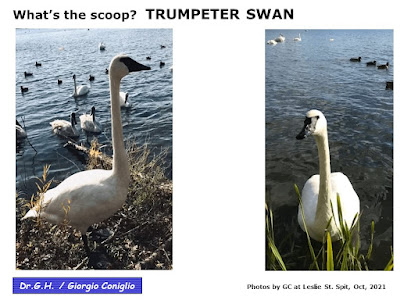Since 2016 Giorgio Coniglio, registered pseudonym and editor-in-chief, has been bundling collections of POETRY, WORDPLAY and PHOTOGRAPHY, seasoned with humour and parody, with the sole aim of entertaining YOU with presentations at the rate of 5 times per month. The related blog "DAILY ILLUSTRATED NONSENSE" sends out items from these collections in somewhat random order one-at-a-time.
Friday, 25 February 2022
Sunday, 20 February 2022
Wordplay Maps: AMERICAN SCRAMBLE-TOWNS #5-8
Forward to U.S.A. map #7
Back to U.S.A. map #3
Let's skip all this stuff and get on to the Canadian version, eh? (stay tuned!)
LINKS:
Forward to U.S.A. map #9
Back to U.S.A. map #5
Let's skip all this stuff and get on to the Canadian version, eh? (stay tuned!)
Tuesday, 15 February 2022
American Satire: A TERM OF ENDIREMENT #4
This post provides a follow-up to
"AMERICAN SATIRE (A Term of Endirement) #1"(Note that this first collection of poems gives helpful suggestions on how to SING these intriguing lyrics.)
make-believe 2016 (convention)
Vladimir's hope
anagrams (D-O-N-A-L-D etc.)
Hillary pilloried
impulse control
laying blame
borscht
Humpty-Dumpty (nursery rhyme)
prior posted poems (#2)
bilateral anagrams
disingenuous Don
intelligence
revision of NAFTA
covfefe
Sharpie-gate
pardoning 'Sheriff Joe
''The Mooch'
conspiracy theories
shutdown
'It is what it is'
tribute to a Senator
tweetstorm
Twitter-ban
Georgia voters
fraudulent
CURRENT CONTENTS:
New Years' greeting
Freedom-from-T**** day
Electile dysfunction
Corrupt
Arizona 'fraudit'
Riotous anniversary
Disaster response
Legacy (free verse)
Dacha (Mar-a-Lago) -- (3 stanzas, a 'brief saga')
Authors' Note: U.S. Senator Hawley of Missouri played a major role in the constitutional events at the Washington Capitol on January 6, 2021, the day of the insurrection directed at the accession of Joe Biden to the presidency.
Authors' Note: In the United States, the Inauguration, a ceremony to mark the commencement of the four-year term of a new president takes place on the January 20th following the November election.
Author's Note: Rudy Giuliani, former federal prosecutor and mayor of New York City, served as a legal advisor to the forty-fifth US leader, coordinating court challenges designed to help overturn the results of the American presidential election of 2020.
Dysfunction as a general medical or social state is discussed by SheilaB, a prolific contributor to the online humor-poetry dictionary OEDILF. Among many verses on the topical specific entity, Giorgio’s take on erectile dysfunction can also be reviewed at that website, or HERE.
Electile dysfunction has not been as popular a topic.
Authors' Note:
frumpery: dowdy or old-fashioned appearance or behaviour
trumpery: attractive articles of little value or worth
This verse was written in early January, 2021, after revelation of a recorded telephone conversation involving the chief election official of the American state of Georgia, as well as lawyers on both sides, in which suggestions were made to illegally revise the previously reported state's results in the recent presidential election of November 2020. The president, in the waning few weeks of his term, had seemed consumed by concern about poorly specified fraud that might have contributed to his loss of Electoral College votes in closely contested states.
Authors' Note:
Authors' Note: If you were going to sing a limerick, this modified 6-line verse (a 'limerrhoid'?) would be a particularly good one to sing to the tune of Gershwin's 'Anniversary Song'. Readers are invited to check out the possibilities for singing limerick verses with a variety of tunes on a blogpost on "Edifying Nonsense". Click HERE.
PROLONGATION
The carnage continues as we move into the next term in US politics! Owing to intense demand for more verses of this type, we have worked hard to accommodate your wishes; in fact, there are now quite a few followup verses, concocted after the original four "Endirement" posts, in a group that we have named "Prolongation"! So, you can view another group of these gut- and heart- wrenching poems by clicking this link !
GENERAL DIRECTIONS FOR WEB-EXPLORERS:
To resume the sequence of daily titillations on our related blog "Daily Illustrated Nonsense", click HERE. Once you arrive, you can select your time frame of interest from the calendar-based listings at the bottom of the page, and check the daily offerings for any month from the start of 2020 until December 2024.
As of December 2024, there are 1800 unique entries available on the daily blog, displaying individual poems (often illustrated) and wordplay, but also with some photo-collages and parody song-lyrics. Most of their key elements are also presented here on "Edifying Nonsense" in topic-based collections, such as this one. The "Daily" format also has the advantage of including some song-lyrics, videos and other material that are not shown here on this topic-based blog.
Thursday, 10 February 2022
True-and-Faux photos: PORTRAITS of COUPLES, #2
Discerning readers will notice that we have recently given an iconic name to our pandemic-inspired business venture, TRUE-and-FAUX PHOTOS.
Continuing with our photo-folio from the initial post ....
prior posts (1st group)
Introductory proposal
----------------------
domestic turkeys
Adam and Eve
armadillos
Aurora and Cephalus
basset hounds
black swans
black-crowned night herons
black-necked swans
broad-headed skinks
bros
CURRENT CONTENTS
Canada geese
chickens
dogpark figures
domestic geese 1(Paris)
domestic geese 2(Toronto)
emus
family - Canada geese
feral domestic ducks
frogs
for continuation, see the link below
We know that you are itching to review more of this photo-portfolio. So, you can do just that by clicking HERE.
GENERAL DIRECTIONS FOR WEB-EXPLORERS:
To resume the sequence of daily titillations on our related blog "Daily Illustrated Nonsense", click HERE. Once you arrive, you can select your time frame of interest from the calendar-based listings at the bottom of the page, and check the daily offerings for any month from the start of 2020 until December 2024.
At the end of that 5 year interval, there were 1800 unique entries available on the daily blog, displaying individual poems (often illustrated) and wordplay, but also with some photo-collages and parody song-lyrics. Most of their key elements are also presented here on "Edifying Nonsense" in topic-based collections, such as this one. The "Daily" format also has the advantage of including some song-lyrics, videos and other material that are not shown here on this topic-based blog.
Saturday, 5 February 2022
Immersible Bird-Verse: WATERFOWL #5 (T to W)
PARODY COMPOSED: Dr. G.H. and Giorgio Coniglio (registered pseudonym), July 2019, a continuation of prior blogposts about waterfowl.
Readers who enjoy poetry describing the natural world around them with illustrative images and informative text, might also enjoy these previous blog-offerings, each a collection of eight poems on this broad topic...
Verses about Waterfowl #1 (part #1), June '19
Verses about Waterfowl #2 (part #2), July '19
Verses about Waterfowl #3 (part #3), April '20
Verses about Waterfowl #4 (part #4), August '20
CURRENT CONTENTS:
Tricolored (Louisiana) herons
Trumpeter swans
Willets
Wood ducks
Wood storks
Yellow-crowned night herons
Cormorant rookery (3 stanzas: a 'brief saga')
A loon's life (3 stanzas: a 'brief saga')
(Note that the three stanzas of this "brief saga" can be found in more readily legible format on the blog "Daily Illustrated Nonsense"; click HERE.)
(Note that the three stanzas of this "brief saga" can be found in more readily legible format on the blog "Daily Illustrated Nonsense"; click HERE.)
Bird-watchers, academic ornithologists, wordplay enthusiasts, wildlife photographers, Giorgio's relatives, and just everyday folks have united in their demand for still more illustrated doggerel on this topic! We have just about used up our inspiration for outpourings about waterfowl. We do have a few thoughts, rhymes and photos concerning landbirds included in posts on 'Birdlore' that you might also enjoy ...
So, please follow this link!
GENERAL DIRECTIONS FOR WEB-EXPLORERS:
To resume the sequence of daily titillations on our related blog "Daily Illustrated Nonsense", click HERE. Once you arrive, you can select your time frame of interest from the calendar-based listings at the bottom of the page, and check the daily offerings for any month from the start of 2020 until December 2024.
As of December 2024, there are 1800 unique entries available on the daily blog, displaying individual poems (often illustrated) and wordplay, but also with some photo-collages and parody song-lyrics. Most of their key elements are also presented here on "Edifying Nonsense" in topic-based collections, such as this one. The "Daily" format also has the advantage of including some song-lyrics, videos and other material that are not shown here on this topic-based blog.
Subscribe to:
Posts (Atom)






































